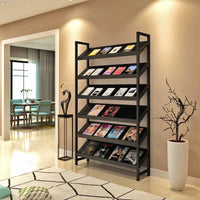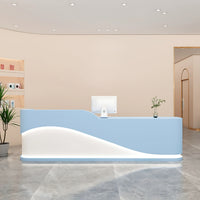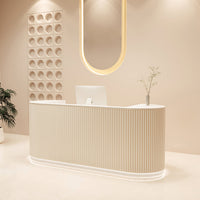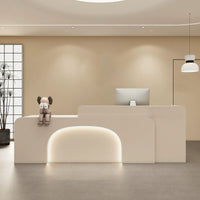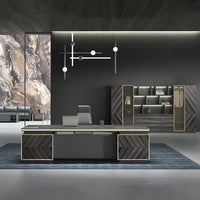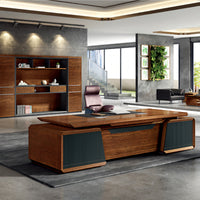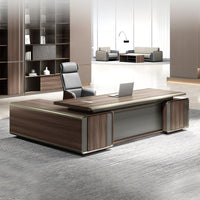How to Choose a Conference Table: The Ultimate Guide for Your Office Needs
kaguyasuContent Menu
● Table of Contents
● Why Choosing the Right Conference Table Matters
● How to Choose a Conference Table: Key Considerations
>> Room Size and Table Dimensions
>> Table Shape and Seating Dynamics
>> Material Selection and Durability
>>> Solid Wood
>>> Glass
>>> Laminate
>> Technology Integration and Features
>> Comfort and Ergonomics
● Popular Conference Table Shapes and Their Uses
● How to Choose a Conference Table for Different Office Types
● Maintenance Tips for Conference Tables
● Frequently Asked Questions (FAQ)
● Summary and Final Thoughts
Choosing the right conference table is a crucial decision for any office, especially for brands, wholesalers, and manufacturers looking to provide OEM services. The conference table not only serves as a functional piece of furniture but also sets the tone for collaboration, professionalism, and brand image. This comprehensive guide will walk you through everything you need to know about how to choose a conference table that fits your space, style, and meeting requirements.

Table of Contents
- Why Choosing the Right Conference Table Matters
- How to Choose a Conference Table: Key Considerations
- Room Size and Table Dimensions
- Table Shape and Seating Dynamics
- Material Selection and Durability
- Technology Integration and Features
- Comfort and Ergonomics
- Popular Conference Table Shapes and Their Uses
- How to Choose a Conference Table for Different Office Types
- Maintenance Tips for Conference Tables
- Frequently Asked Questions (FAQ)
- Summary and Final Thoughts
Why Choosing the Right Conference Table Matters
A conference table is more than just a piece of furniture; it is the centerpiece that facilitates communication, decision-making, and teamwork. Choosing the right table can enhance productivity, encourage collaboration, and reflect your company's brand identity. Conversely, a poorly chosen table can lead to discomfort, inefficient use of space, and a negative impression on clients and employees alike.
How to Choose a Conference Table: Key Considerations
Room Size and Table Dimensions
One of the most important factors when learning how to choose a conference table is understanding the size of your meeting room. The table should comfortably accommodate all participants while allowing enough space for movement around it.
- Measure your room's usable floor space carefully. A good rule of thumb is to subtract 10 feet from the total length of the room to find the ideal table size[1].
- Allow at least 36 to 42 inches of clearance between the table and walls or other furniture for easy circulation[5].
- Seat width per person: Each seat requires a minimum of 30 inches, but 48 inches is preferable for a more spacious feel[1][5].
- Consider the number of attendees to ensure the table size supports the seating capacity without overcrowding.
Table Shape and Seating Dynamics
The shape of the conference table influences communication flow and meeting dynamics. Here's how to decide:
- Rectangular tables are ideal for formal meetings and large groups but may create a hierarchy[5].
- Round or oval tables promote equality and collaboration, perfect for smaller teams[5][2].
- Boat-shaped tables offer elegance and better sightlines for large meetings[5].
- U-shaped or modular tables provide flexibility for various meeting setups and encourage interaction[2][5].
Choosing the right shape depends on your meeting style and the type of discussions you want to encourage.
Material Selection and Durability
The material of the conference table affects its durability, aesthetics, and maintenance. Here's a breakdown of common materials and their pros and cons:
Solid Wood
- Offers warmth, quality, and durability.
- Hardwood options like oak or maple resist scratches better than softwoods[4].
- Higher cost but a long-term investment in appearance and longevity.
Glass
- Provides a modern, sleek look and makes smaller rooms appear larger.
- Easy to clean but prone to fingerprints and scratches[4].
- Requires regular maintenance and sound considerations.
Laminate
- Budget-friendly and available in many colors and finishes.
- Resistant to scratches and stains but less premium in feel compared to wood or glass[4].
- Ideal for startups or offices prioritizing function over form.
Technology Integration and Features
Modern conference tables often come with built-in technology to support hybrid meetings and presentations:
- Power outlets and USB ports integrated into the table for easy device charging[5].
- Cable management systems to keep wires organized and out of sight.
- Tables designed to face webcams and monitors in hybrid meeting setups[1].
Comfort and Ergonomics
Long meetings require comfortable seating and ergonomic considerations:
- Ensure the table height is standard (around 30 inches) to accommodate most chairs comfortably[1].
- Consider legroom and table edge design to prevent discomfort.
- Pair the table with ergonomic chairs to maintain participant engagement[7].
Popular Conference Table Shapes and Their Uses
| Shape | Best For | Pros | Cons |
|---|---|---|---|
| Rectangular | Formal meetings, large groups | Maximizes seating, traditional | Can create hierarchy |
| Round/Oval | Collaborative, small to medium teams | Equal participation, inclusive | Less seating capacity |
| Boat-shaped | Large meetings, presentations | Elegant, good sightlines | Less common, higher cost |
| U-shaped | Interactive sessions, training | Facilitates discussion | Requires more room |
| Modular | Flexible setups, multi-purpose rooms | Reconfigurable, versatile | Can be complex to arrange |
How to Choose a Conference Table for Different Office Types
- Small Offices: Opt for compact rectangular or round tables to maximize space without overcrowding[3].
- Design Studios: Choose materials and shapes that reflect your brand's aesthetic and promote creativity, such as glass or wood with modern shapes[4].
- Corporate Boardrooms: Large rectangular or boat-shaped tables with integrated technology are ideal[5].
- Hybrid Meeting Rooms: Tables should be arranged to face cameras and monitors, with built-in power and cable management[1][7].
Maintenance Tips for Conference Tables
- Regularly clean surfaces according to material type (wood polish, glass cleaner, laminate wipes).
- Protect wood tables with coasters and avoid direct sunlight to prevent fading.
- Check and maintain cable management systems to avoid clutter.
- Inspect for scratches or dents and repair promptly to extend table life.
Frequently Asked Questions (FAQ)
Q1: How do I determine the right size for a conference table?
A1: Measure your room's usable space, subtract about 10 feet from the length, and allow at least 36 inches clearance around the table. Each seat should have 30-48 inches width[1][5].
Q2: What is the best shape for a conference table?
A2: It depends on your meeting style. Rectangular for formal, round or oval for collaboration, and boat-shaped for presentations are common choices[2][5].
Q3: Which material is most durable for a conference table?
A3: Solid hardwood is the most durable but costly, while laminate offers a budget-friendly option with decent durability. Glass is stylish but requires more maintenance[4].
Q4: Should I consider technology integration in the table?
A4: Yes, especially for hybrid meetings. Look for tables with built-in power outlets, USB ports, and cable management to support devices and presentations[1][5].
Q5: How important is ergonomics in choosing a conference table?
A5: Very important. Standard table height and sufficient legroom ensure comfort during long meetings, helping maintain focus and participation[7].
Summary and Final Thoughts
Knowing how to choose a conference table involves balancing room size, table shape, material, technology needs, and comfort. The right table enhances communication, reflects your brand, and supports productive meetings. Whether you're outfitting a small office or a large corporate boardroom, this guide provides the essential insights to make an informed choice.

[1] https://neat.no/resources/choosing-the-right-conference-table-size-for-a-meeting-room/
[2] https://www.custom-conference-tables.com/help-guides/conference-table-shapes/
[3] https://madisonliquidators.com/blog/a-guide-to-finding-the-right-conference-table-for-a-small-office/
[4] https://fargowoodworks.com/how-do-i-choose-a-conference-table-for-a-design-studio-a-comprehensive-guide/
[5] https://www.arensonof.com/buying-a-conference-table/
[6] http://airventec.com.cn/wp-content/uploads/2018/10/2017K-1.pdf
[7] https://www.sicoinc.com/de/europe/blog/how-to-choose-the-right-conference-room-setup-and-tables-for-your-needs/
[8] https://www.china-packcon.com/content/dam/sitebuilder/rxch/packcon/down/Packcon-2019-Journal-compressed.pdf
[9] https://www.nepconasia.com/content/dam/sitebuilder/rxch/nepconasia/%E5%BE%AE%E4%BF%A1%E4%B8%8B%E8%BD%BD/CNZ%20AWC%202020_Directory_%E5%90%AB%E5%B9%BF%E5%91%8A_%E5%8A%A0%E5%AF%86%20.pdf.coredownload.983266552.pdf
Hot Tags: China, Global, OEM, private label, manufacturers, factory, suppliers, manufacturing company



